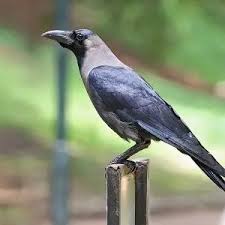Indian House Crows:

The Kenyan government has announced an action plan to eliminate a million Indian House Crows (Corvus splendens) by the end of 2024.
- This decision stems from the birds’ significant negative impact on local ecosystems and their nuisance to the public, particularly in the Kenyan coastal region.
- The Indian House Crow is described as an invasive alien species from India and parts of Asia, introduced to East Africa via shipping activities.
- The crows prey on endangered local bird species, destroy nests, and eat eggs and chicks, leading to a decline in indigenous bird populations.
- This decline disrupts the ecosystem, allowing pests and insects to proliferate, further harming the environment.
- A similar effort in Kenya over 20 years ago managed to reduce their numbers temporarily.
- An action plan to combat the crow menace includes mechanical and targeted methods for culling the birds, and use of licensed poison for population control.
Indian House Crows:
- Species: Corvus splendens
- Common names: Indian house crow, house crow, Indian crow, grey-necked crow, Ceylon crow, Colombo crow
- Family: Corvidae
- The nominate race of Corvus splendens (C. splendens) exists in India, Nepal and Bangladesh and has a grey neck collar.
- Conservation Status:
- IUCN Status: Least ConcernedWildlife Protection Act: Schedule II




